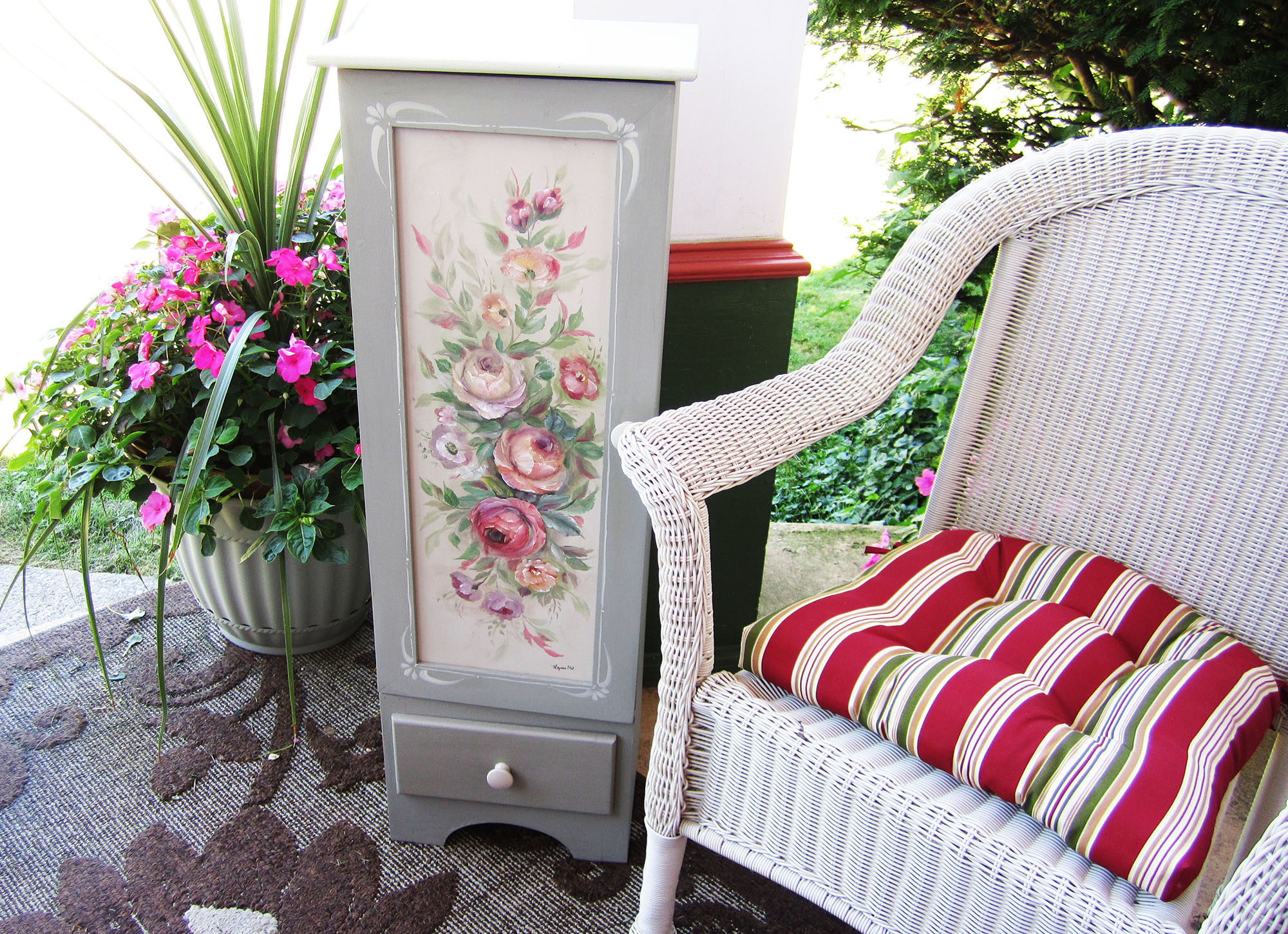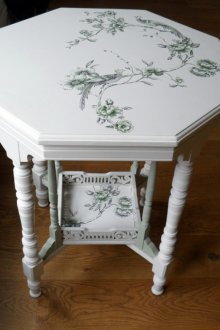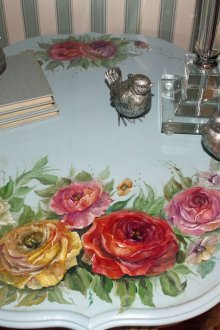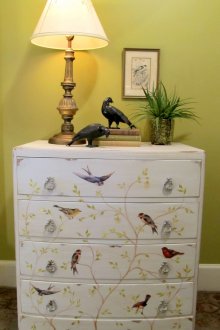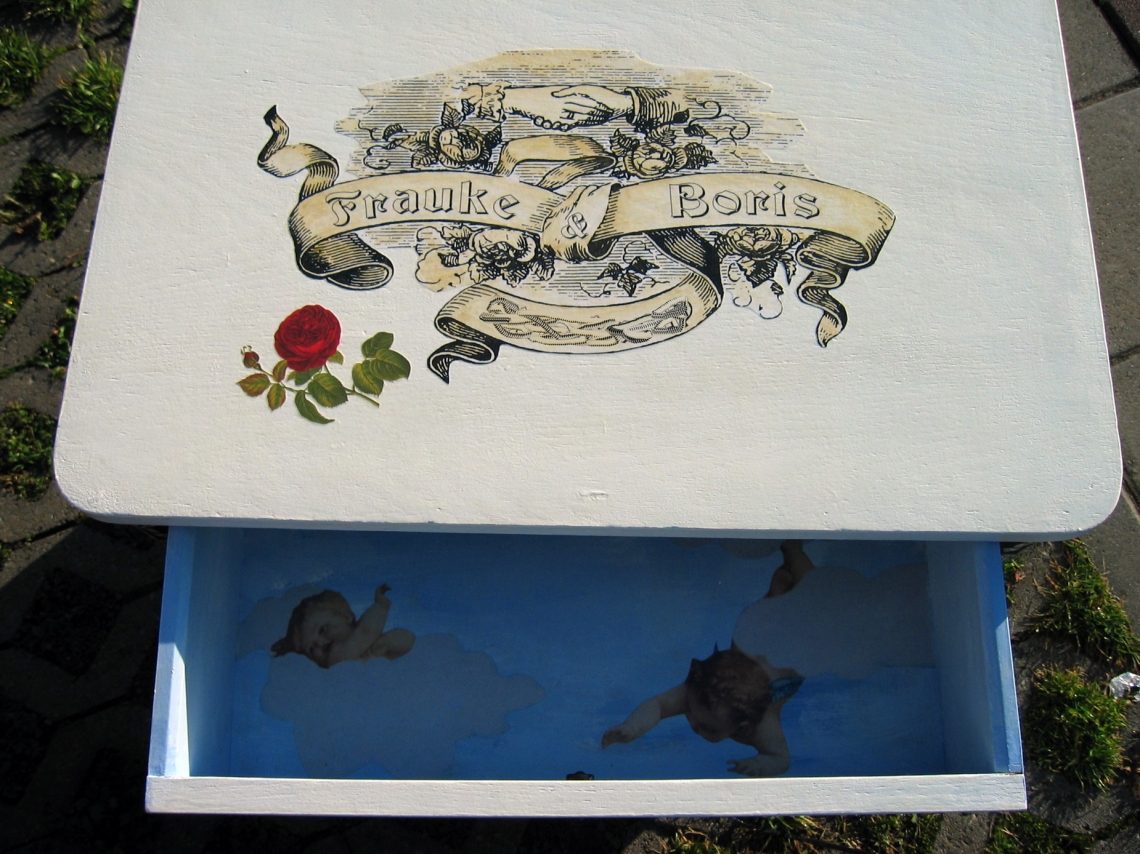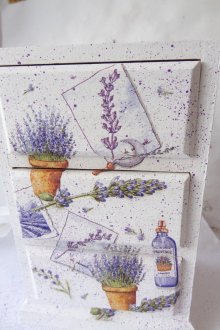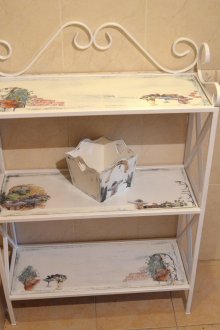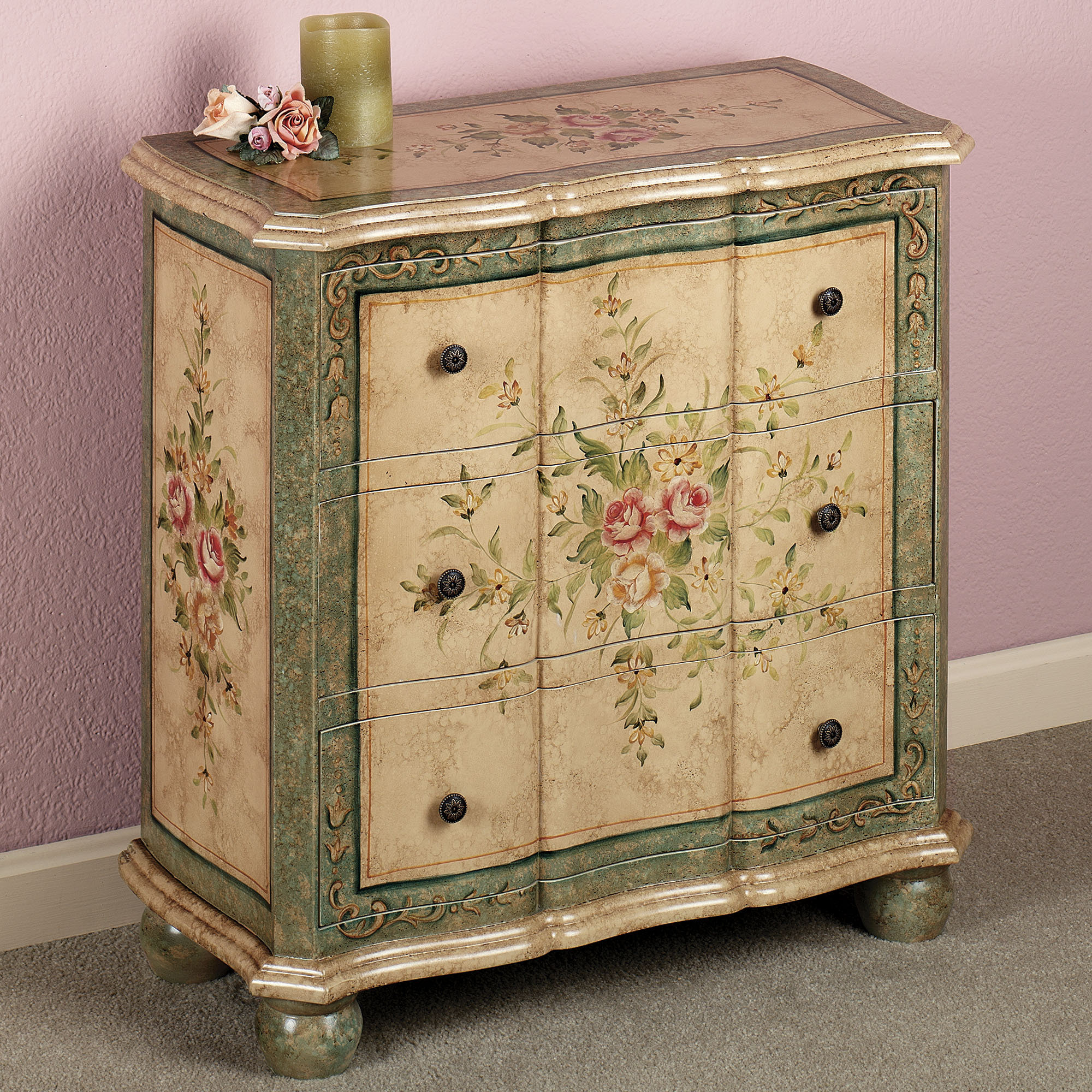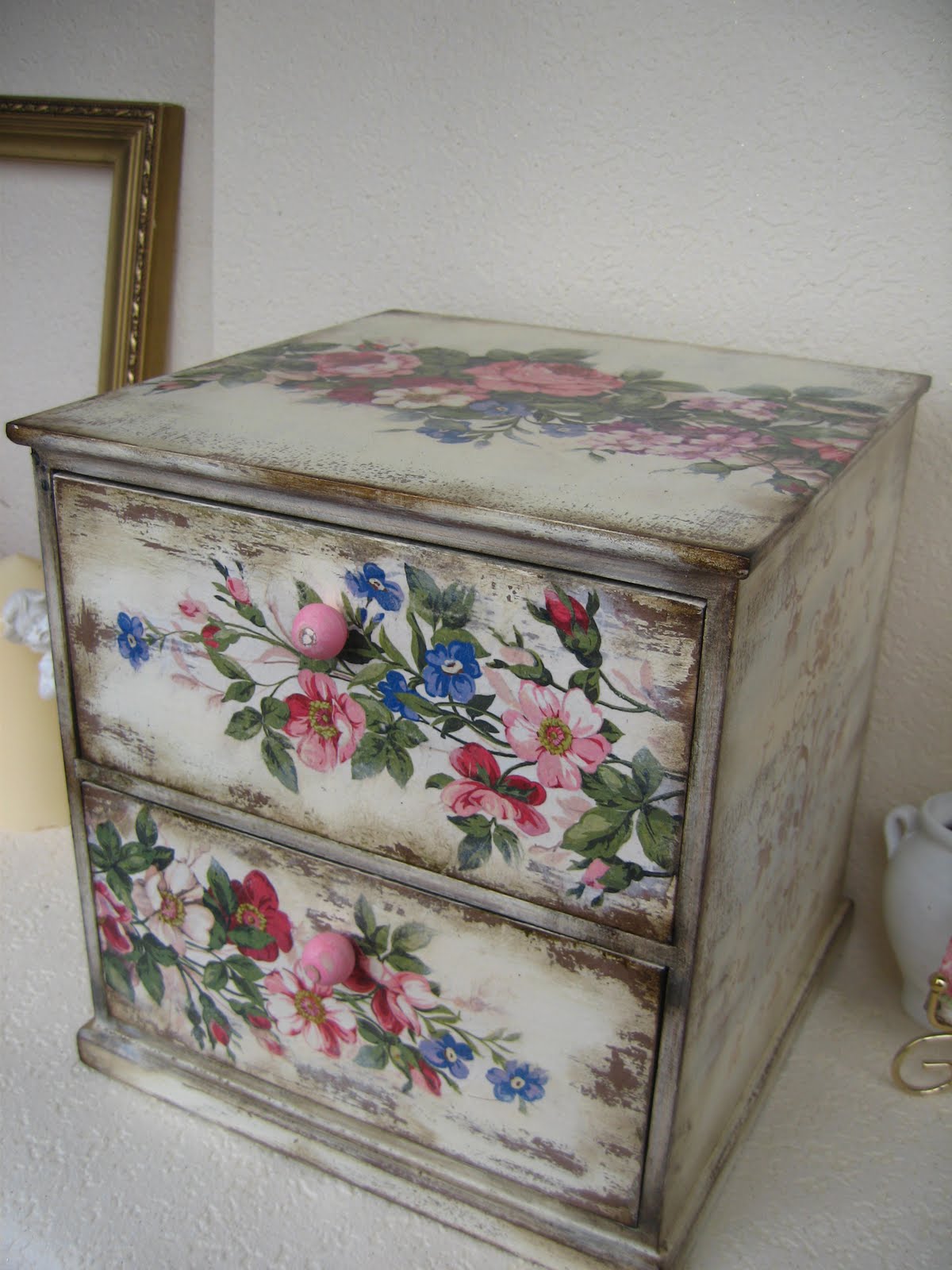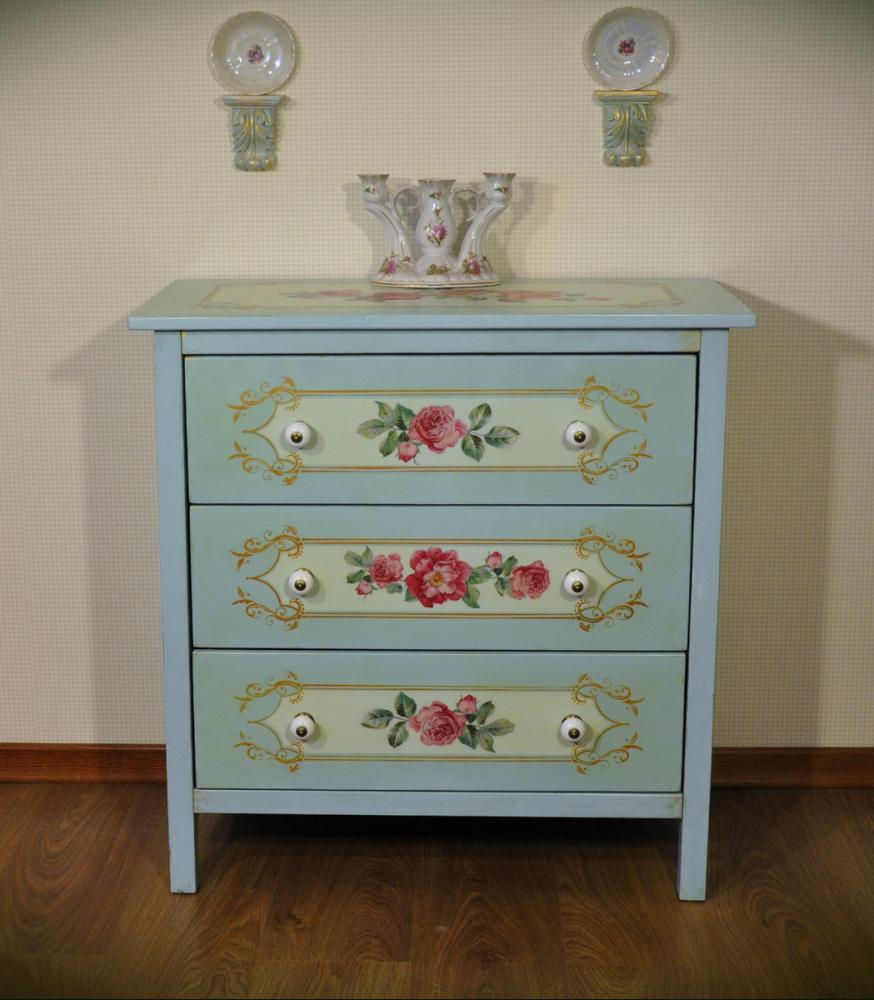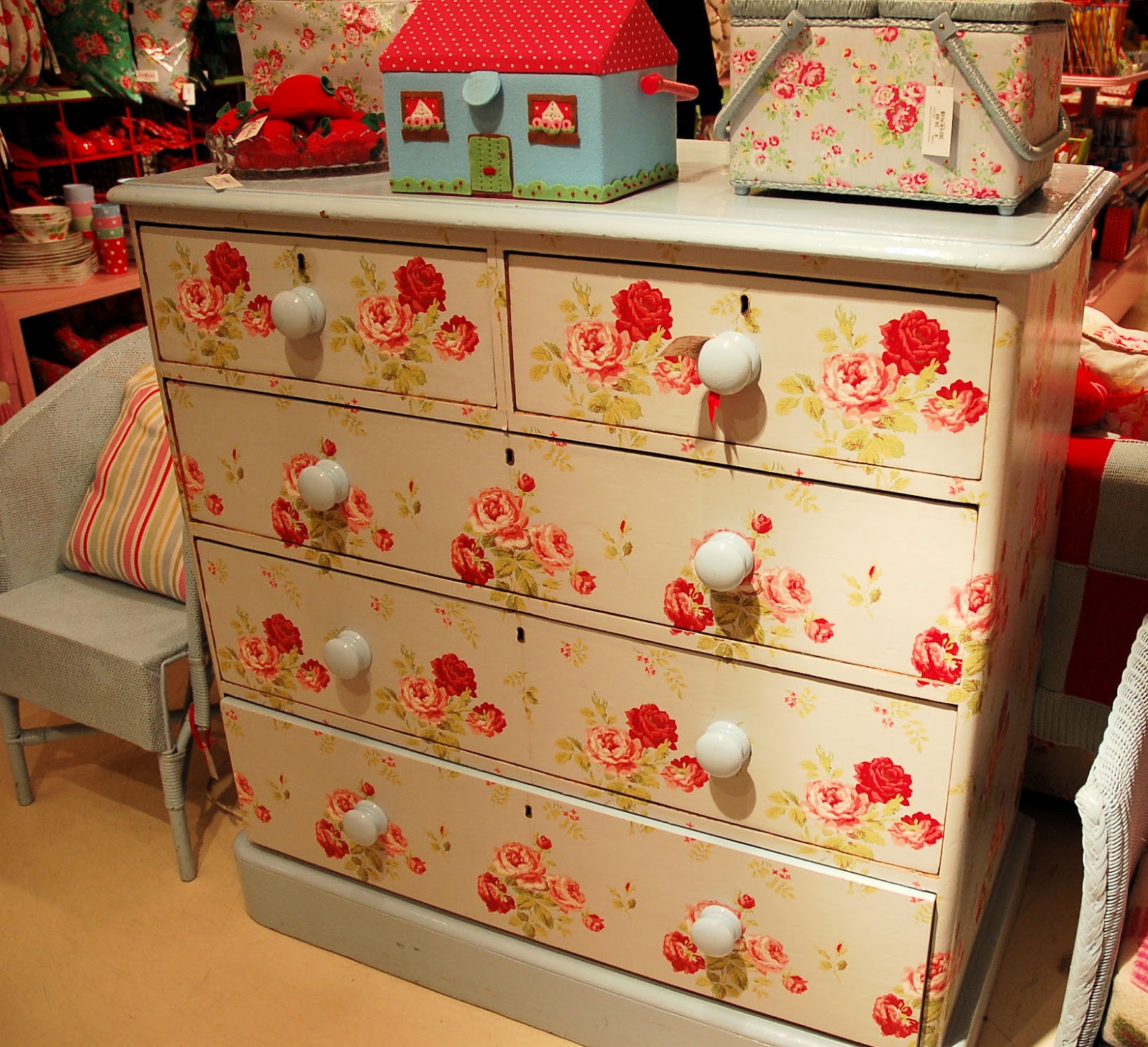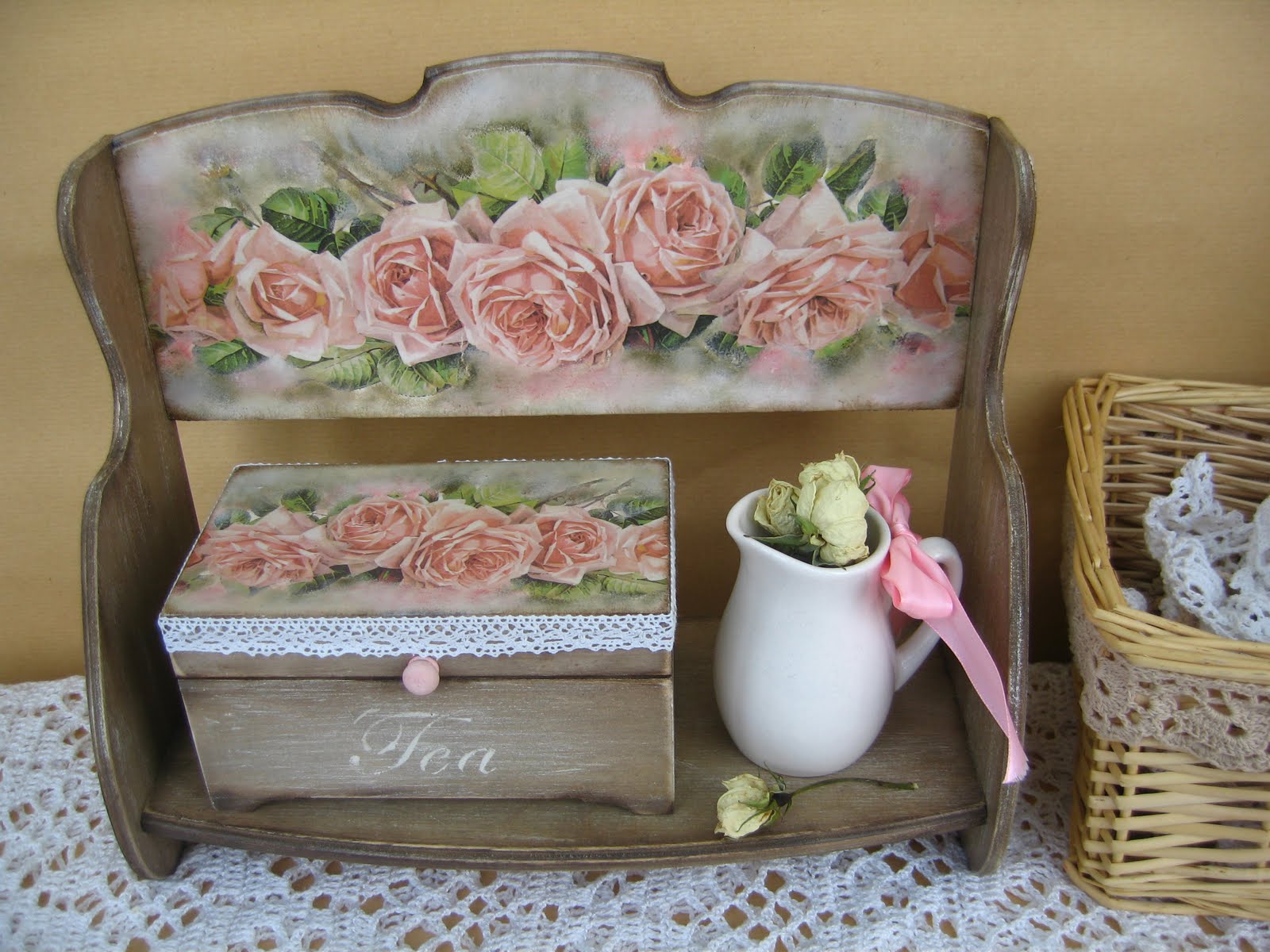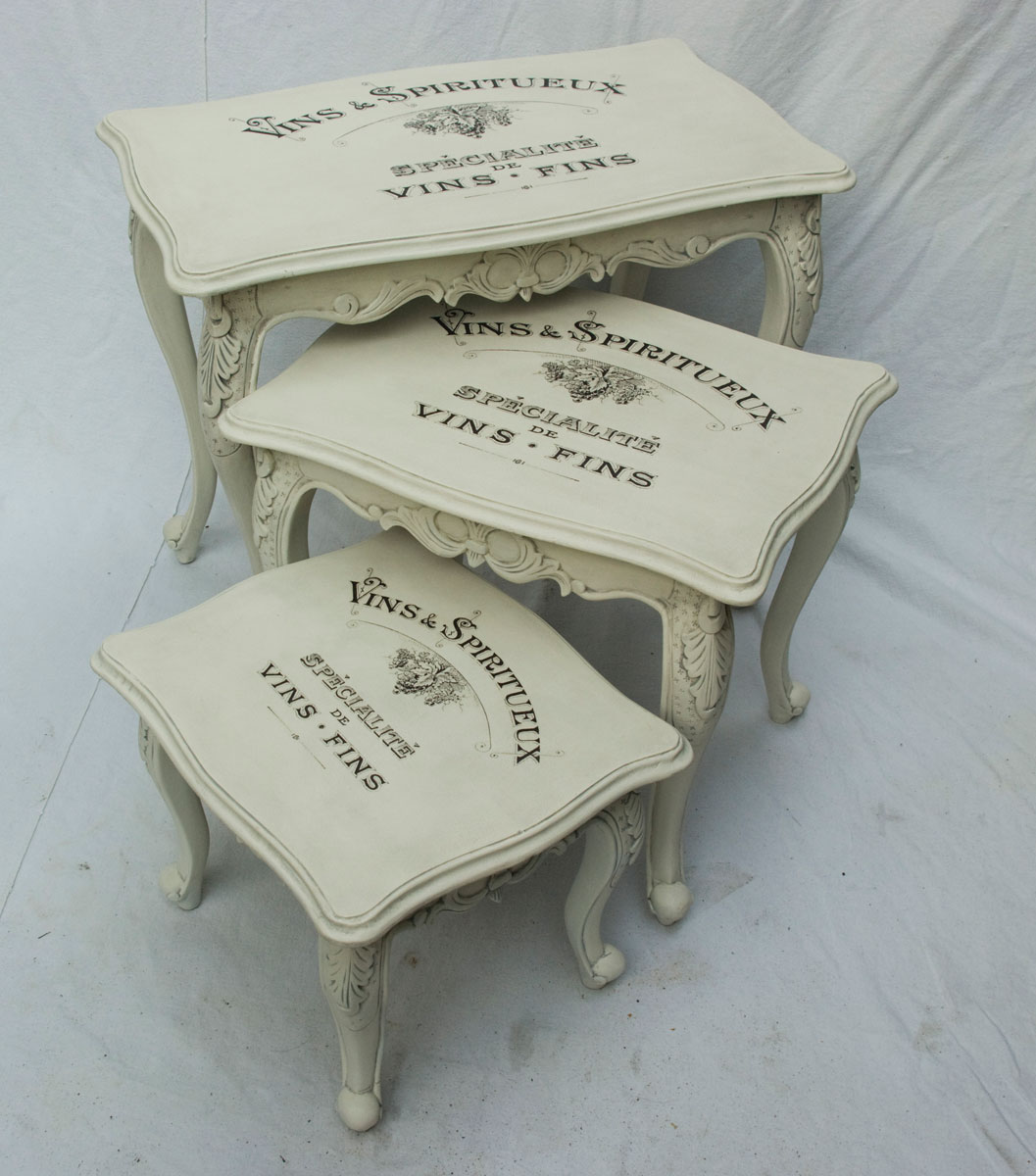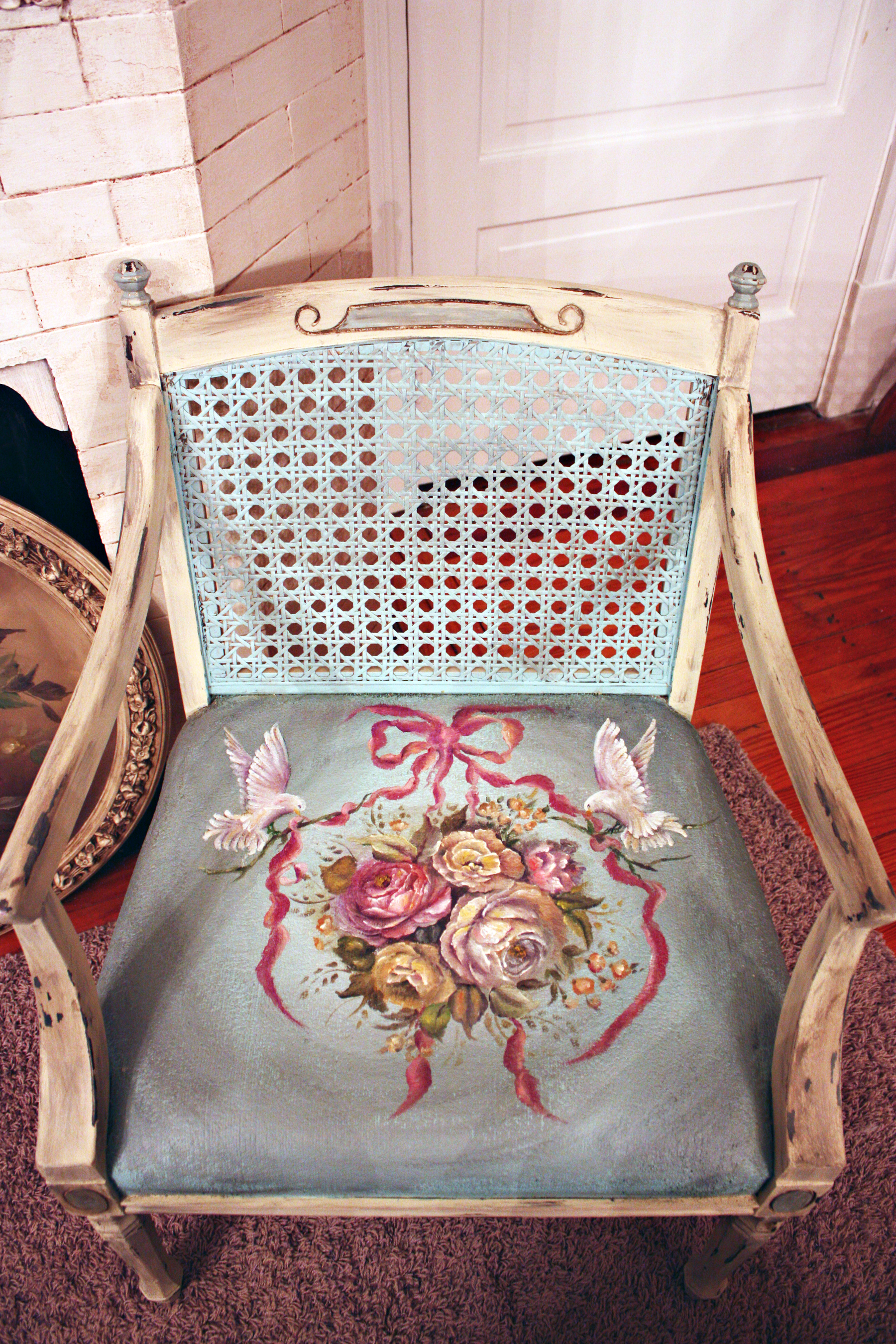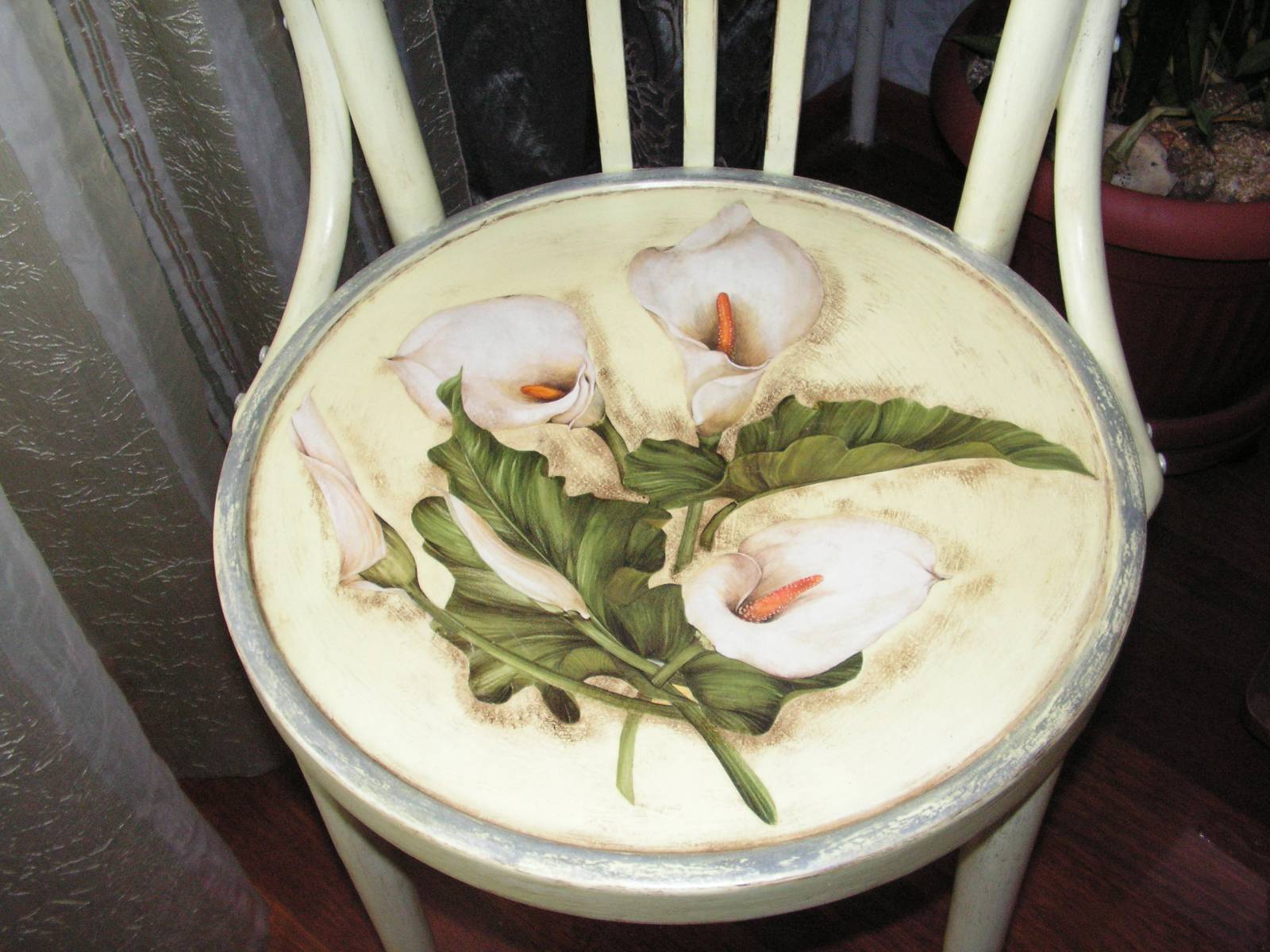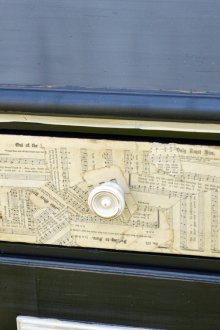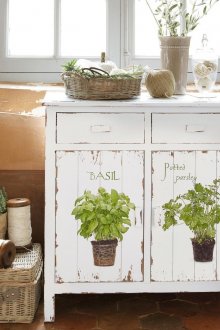DIY furniture decoupage (21 photos): best ideas
Content
Decoration of furnishings and decor with the help of carved pictures came from medieval Germany. Few could then afford incrustation on a casket or bureau, so they decorated the cabinets and chests with paper illustrations, covering them with a layer of varnish. This art was called decoupage furniture, it is popular now. Some people do not want to part with the old furniture and renovate it; some, for economic reasons, resort to updating tables, cabinets and cupboards using decoupage technique.
What is decoupage?
Decoupage is the art of updating furniture or, more precisely, the decoration technique:
- using wallpaper;
- Newspapers
- wood parts;
- cloth;
- lace;
- special napkins;
- postcards;
- printed illustrations.
This is far from all that masters can use to implement ideas for furniture renovation. After all, furniture decoupage is a kind of application and you can make it from any thin materials that are glued and varnished. A small thickness of the applicative elements is necessary so that the parts do not protrude under the polished coating.
Types of decoupage equipment
In modern technology, the following types of decoupage are known:
- A straight line in which the application is glued to the outside of the object. Prior to this, the surface can be pre-painted or varnished. After sticking the image and do another varnish treatment.
- The reverse, where the procedure for applying materials is the same, only the picture must be glued face to the surface on the other hand, and then, on the inside, do the varnish treatment, etc. It is used to decorate glass objects.
- Volumetric, in which the elements to be glued are specially lifted by multilayer overlapping, due to other objects or simulated mass. It is used for restoration of details and furniture of a children's room or for decorative pictures.
- Smoky, imitating art painting. This effect can be done with paints and special techniques. The boundaries of the picture around which the effect of translucent haze appears, smoothly merge with the painted surface.
- Decopatch, which appeared as a result of the creative combination of decoupage and patchwork. The main difference of this type in the details used. Not a specific fragment or element is glued onto the surface, but many small pieces. Usually the whole item is decorated. Used to decorate figurines or accessories.
Skilled craftsmen have learned to combine several types of equipment on one subject, achieving an unusual effect and creating a completely unique thing.
In parallel, techniques are used to create a certain effect. The most used:
- craquelure or cracking by applying a special varnish or solution;
- attrition;
- patination or blackout;
- shading or applying shade;
- tinting or applying certain color spots, as well as giving color to an already finished surface;
- potal (silvering or gilding) or applying special paints for the effect of inlay.
Stylistic directions of decoupage
Furniture decoupage is performed in different styles.Widely applied:
- Provence
- Simple city;
- French vintage;
- Victorianism
- Shabby chic;
- Ethnic style.
A popular and widespread Provence came from a French province. It combines a whitened surface and a picture in pastel colors. Abrasion and roughness are inherent in this style, therefore, artificial aging is used, which can be done using craquelure varnish and special techniques. It is advisable to make an applique for Provence with decoupage napkins, fabric or the remains of wallpaper with a floral pattern. Suitable for restoration of furniture of a kitchen or a country house.
For simple city or, as it translates, the style of a simple city, democratic and fashionable ideas, implemented by the de-patch technique, are typical. It is preferable to make applications with newspapers or clippings from magazines with torn edges. It is used for dishes, bookcases or shelves, the surface of kitchen tables.
French vintage or black and white vintage is becoming more popular every day. It is characterized by painting in two colors - black and white - with rare interspersing with light pastel shades. Fashionable ideas with minimalism in the decor served to popularize it. French vintage is a subspecies of simple city, which explains the simplicity of the composition and colors.
Popularity does not occupy a style called shabby chic. Imperishable fashion for antiques supports this direction because of the main feature - it is blurry and scuffed paintings, the presence of details with images of roses and angels. Elements under shabby chic will help to create a cozy interior for a bedroom, a girl’s room or even a kitchen.
Less common is Victorianism due to external luxury. To translate Victorian furniture renovation ideas, certain decoupage skills are needed. For this direction, it is necessary to use shades of gold, green, red, or painting with elements of still lifes, as well as images of hunting, animals and flowers. It is rare in modern interiors, as it requires bulky wooden headsets with a polished surface. It can be interwoven with elements of shabby chic and black and white vintage and provence.
Ethnostyle is a product of modernity. The development of international tourism has spilled out in the form of ornaments under animal skins, exotic fruits, as well as from tropical elements. You can perform decoupage in ethnic style with lace, napkins and wallpaper residues with a characteristic pattern that are dyed in the required colors. With proper selection of details, it is suitable for decoration of any room.
Do it yourself furniture update
Any person who is able to hold scissors and brushes in their hands can decoupage old furniture on their own. The very first thing you need is to choose an item for restoration, come up with a decoration, purchase and prepare the necessary materials, and only then turn your ideas into reality.
Performing decoupage with your own hands, you need to observe some subtleties of work:
- Before work, sand the surface for restoration with fine emery paper to smooth out the roughness. If the shade on the treated area is uneven, then it should be painted. In the presence of cracks, chips, scratches and other damages, the surface can be leveled with wooden putty or putty. Decoupage can only be done after the item has completely dried.
- Prepare suitable materials, cut elements. At the first experience of furniture renovation, it is recommended to choose simple details, small in size, but proportional to the surface.
- For beginners, you can make a stencil of the part where it will be pasted.
- Apply special decoupage glue or PVA to the surface. Then glue the part with glue.
- Stick on the decoration element, paying attention to the tightness of the edges.
- Smooth the surface by removing air bubbles from under the part.
- After complete drying, do the varnish treatment. It can be selected depending on the decoupage style. If the picture is painted, then the varnish needs transparent furniture, if there are elements of shabby chic, then craquelure varnish is needed.
For the first experiment, it is recommended to take a small area for decoupage, for example, the surface of the table. Any kitchen item is also suitable. You can practice decorating cabinet doors with wallpaper details. This will provide an opportunity to evaluate their own creative and painting abilities.

